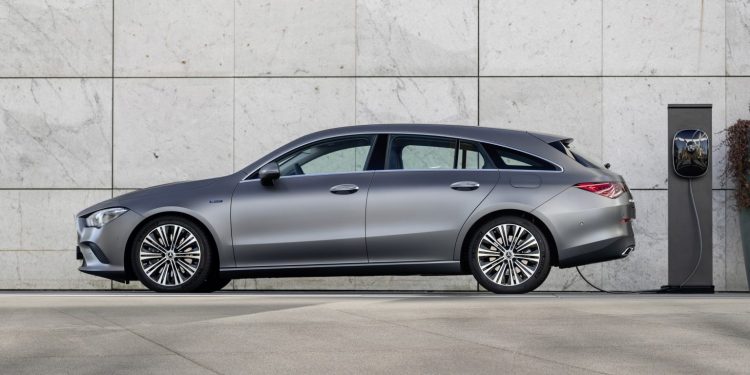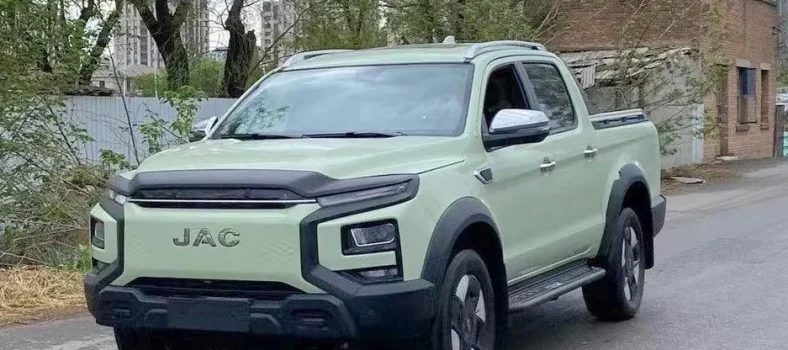CLA Coupé, CLA Shooting Brake Dan GLA Sekarang Dengan EQ Power
Mercedes-Benz memperluas penawaran EQ di Eropah
Mercedes-Benz Malaysia telah menunjukkan kepada rakyat Malaysia bagaimana hibrid plug-innya menjimatkan bahan bakar dan juga memberikan dinamik pemanduan yang sangat menghiburkan dengan C 350e terlaris dan juga E350e. Kedua-dua kereta dilancarkan pada tahun 2017 dan permintaan mereka pada tahap melebihi penawaran. Kenapa? Well, dengan insentif cukai hibrid yang disesuaikan dari kerajaan Malaysia dan agensi automotifnya, mudah bagi Mercedes-Benz untuk menghargakan kereta ini di bawah adik beradik berkuasa penuh mereka. Kemudian apabila insentif cukai berakhir, penjualan kereta ini juga berakhir kerana harga penjualannya yang dikenakan cukai terlalu tinggi. Inilah sebabnya mengapa permintaan untuk hibrid dan kenderaan hibrid plug-in di Malaysia hari ini menurun.
Sementara itu, Mercedes-Benz terus mengembangkan lebih banyak hibrid plug-in untuk pasaran global dan di sini terdapat tiga model baharu. Pada bulan Ogos tahun lalu Mercedes-Benz menunjukkan kepada dunia hibrid plug-in A-Class yang kompak.

Kenyataan Media: Mercedes‑Benz Cars is continually increasing its range of plug-in hybrids under the EQ Power label. With the CLA 250 e Coupé (combined fuel consumption 1.5-1.4 l/100 km, combined CO2 emissions 35-31 g/km, combined electrical consumption 15.1-15.0 kWh/100 km)1, CLA 250 e Shooting Brake (combined fuel consumption 1.6-1.4 l/100 km, combined CO2 emissions 37-33 g/km, combined electrical consumption 15.4-14.8 kWh/100 km, and GLA 250 e (combined fuel consumption 1.8-1.6 l/100 km, combined CO2 emissions 42-38 g/km, combined electrical consumption 16.1-15.5 kWh/100 km, Mercedes-Benz is completing the range of EQ Power models in the compact-car family with the third-generation hybrid drive system. The new models can be ordered in spring of this year, with the market launch following just a few weeks later.

For the new compact vehicles with EQ Power, (electric) driving pleasure and suitability for everyday use are to the fore. This is illustrated by the models’ highlights:
- Electric operating ranges of 71-79 km (NEDC)
- Electric output 75 kW
- System output 160 kW
- System torque 450 Nm
- Alternating-current (AC) charging system up to 7.4 kW
- Direct-current (DC) charging system at max. 24 kW
- Hardly any restrictions on the load compartment.

The vehicles belonging to Mercedes-Benz’s compact car family feature transversely mounted engines. A compact hybrid traction head has been developed for the 8G-DCT dual clutch transmission which follows the same technical principles as the corresponding component on the vehicles with a longitudinally installed engine. It is a permanently excited synchronous machine as an internal rotor. The stator is permanently integrated in the traction head housing, while the low-loss wet clutch is incorporated in the motor’s rotor.
On-demand stator and rotor cooling allow use of the electric motor’s peak and continuous output without any problems.
For the first time on a Mercedes-Benz vehicle, the combustion engine is started by the electric motor – the compact hybrids do not have a separate 12-volt starter.

High system output provides for plenty of driving enjoyment
The electric machine achieves 75 kW. Together with the 1.33-litre four-cylinder engine this produces a system output of 160 kW (218 hp) and a system torque of 450 Nm. Thanks to the EQ Power of the electric motor, these vehicles respond to the accelerator very rapidly and deliver impressive performance: the A 250 e, for example, requires 6.6 seconds for the sprint from 0 to 100 km/h, and its top speed is 235 km/h (see next page for further data).
A lithium-ion high-voltage battery with a total capacity of approx. 15.6 kWh is used as an electric energy storage unit. The new compact models can be charged with alternating current or direct current. A corresponding vehicle socket is located in the right-hand side wall of the vehicles. This means that the compact plug-in hybrids can be charged at a 7.4 kW wallbox with alternating current (AC) within 1 h 45 min from 10-100 percent SoC (State of Charge). For direct-current (DC) charging at 24 kW, the battery can be charged from 10-80 percent SoC in around 25 minutes.
The batteries are supplied by the wholly owned Daimler subsidiary Deutsche ACCUMOTIVE. The high-voltage battery is water-cooled and weighs approx. 150 kg.
Clever packaging
An innovative exhaust system allows exceptionally clever packaging: to enable only minimal reduction in boot capacity compared with the sister models without hybrid engines, the exhaust ends in a centrally positioned outlet under the vehicle floor, with the rear silencer housed in the transmission tunnel. Integrating the fuel tank into the axle installation space creates additional room beneath the rear seats for the high-voltage battery.
The compact vehicles are equipped with third-generation plug-in technology. Its functions include in particular the intelligent, route-based operating strategy, taking factors such as navigation data, speed limits and route into account. The operating strategy takes into account the entire planned route and prioritises the electric driving mode for the most sensible route sections in each case.
With the launch of MBUX (Mercedes-Benz User Experience) the previous plug-in operating modes of all EQ Power models have been converted to drive programmes. That means that in every Mercedes-Benz plug-in hybrid the new drive programmes “Electric” and “Battery Level” are available. This is the case from the outset for the compact models. Maximum e-performance can be experienced in “Electric”. The combustion engine is only engaged if the driver uses kickdown on the accelerator pedal. In the “Electric” programme, the energy recovery level can also be selected via paddles behind the steering wheel. The paddles on the steering wheel enable the selection of five different recuperation levels (DAUTO, D+, D, D– and D—).
Comfort, ECO and Sport modes are also available. According to the given requirements, the driver is thus able to give priority to electric driving, place the emphasis on driving dynamics in combined drive mode or give preference to combustion mode in order to save electric range, for example.
One important comfort feature is the pre-entry climate control prior to starting a journey, which can also be activated conveniently by smartphone. The towing capacity of the compact hybrids is impressive at 1600 kg (braked).






No Comment